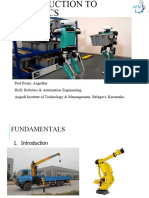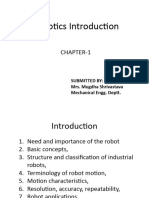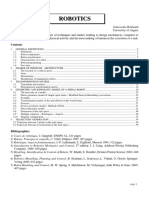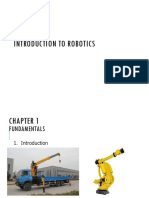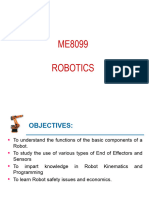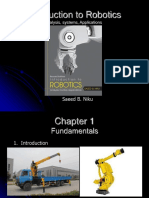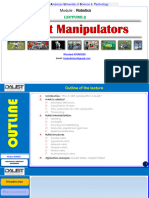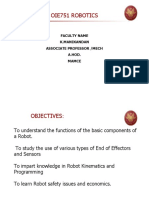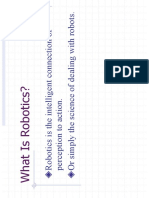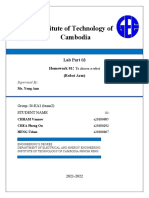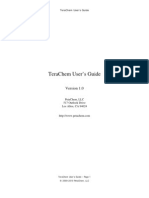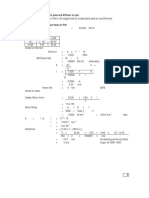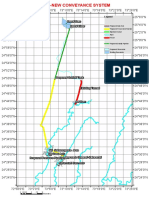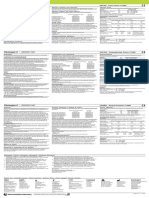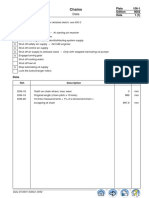0% found this document useful (0 votes)
352 views13 pagesChapter 6 Introduction To Robotics
This document provides an introduction to robotics, including definitions of robots and robotics, a brief history, and descriptions of the main components and types of robots. It defines a robot as an automated machine that can perform mechanical functions like a human. The main types discussed are manipulators for industrial automation, walking robots, and mobile robots. Manipulators have two main parts - an end effector and articulated mechanical structure. The document also describes the typical parts of a robot like its mechanism, perception capabilities, controller, and interfaces. It provides an overview of robot mechanical structures, parts like links and joints, and common specifications.
Uploaded by
Siferaw NegashCopyright
© © All Rights Reserved
We take content rights seriously. If you suspect this is your content, claim it here.
Available Formats
Download as PPTX, PDF, TXT or read online on Scribd
0% found this document useful (0 votes)
352 views13 pagesChapter 6 Introduction To Robotics
This document provides an introduction to robotics, including definitions of robots and robotics, a brief history, and descriptions of the main components and types of robots. It defines a robot as an automated machine that can perform mechanical functions like a human. The main types discussed are manipulators for industrial automation, walking robots, and mobile robots. Manipulators have two main parts - an end effector and articulated mechanical structure. The document also describes the typical parts of a robot like its mechanism, perception capabilities, controller, and interfaces. It provides an overview of robot mechanical structures, parts like links and joints, and common specifications.
Uploaded by
Siferaw NegashCopyright
© © All Rights Reserved
We take content rights seriously. If you suspect this is your content, claim it here.
Available Formats
Download as PPTX, PDF, TXT or read online on Scribd
/ 13




